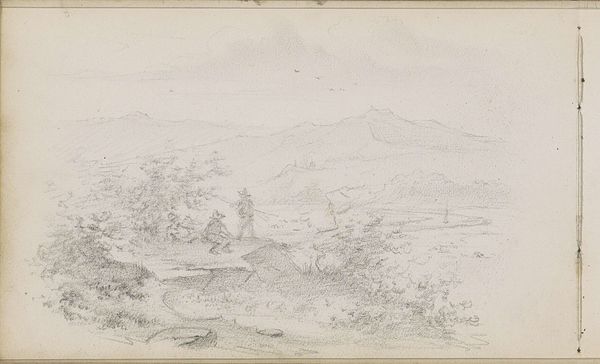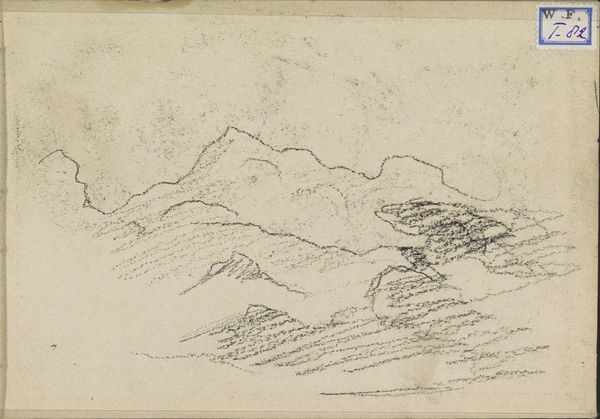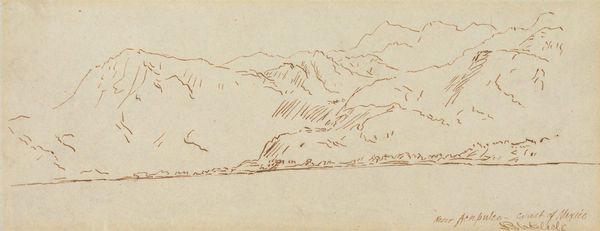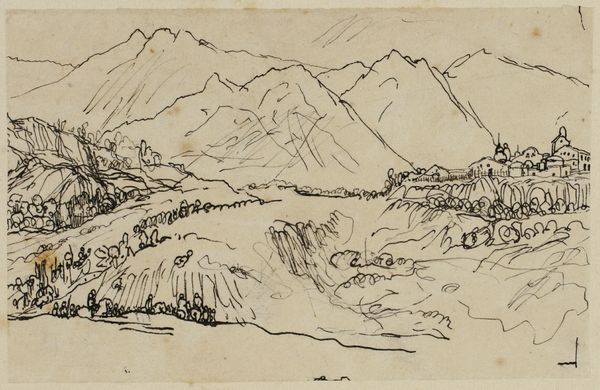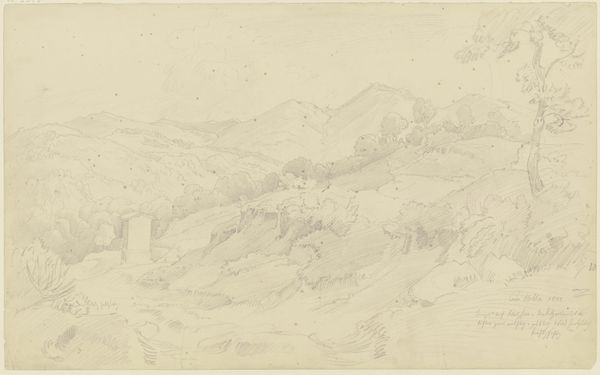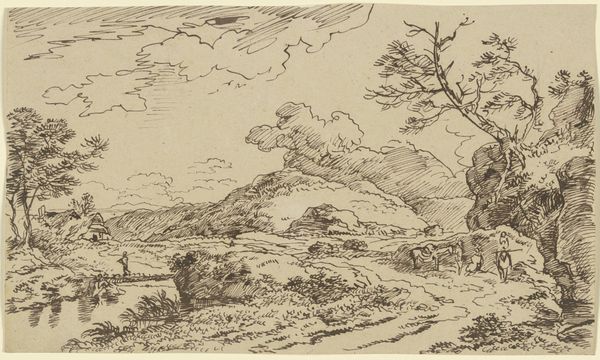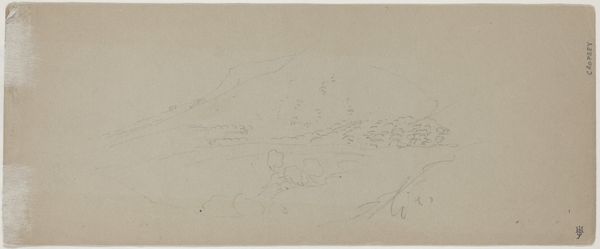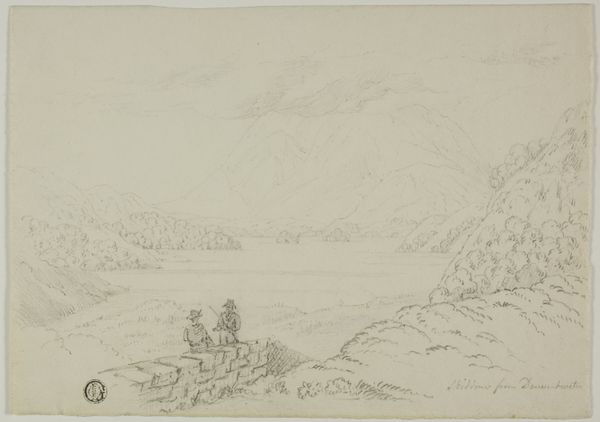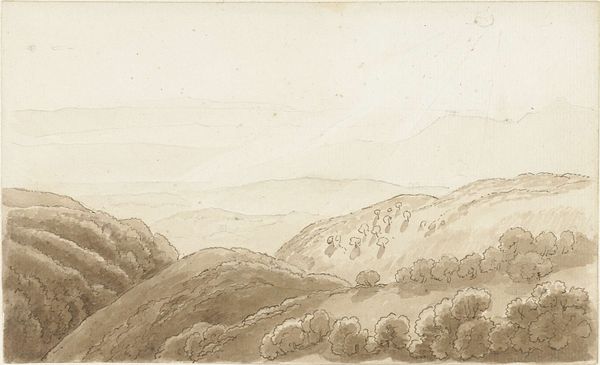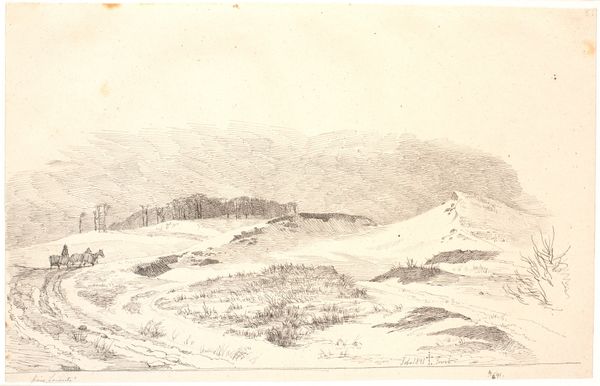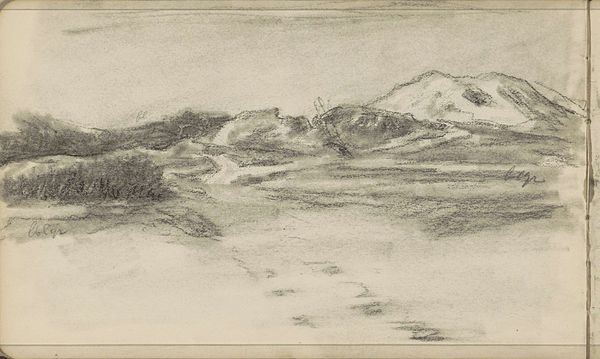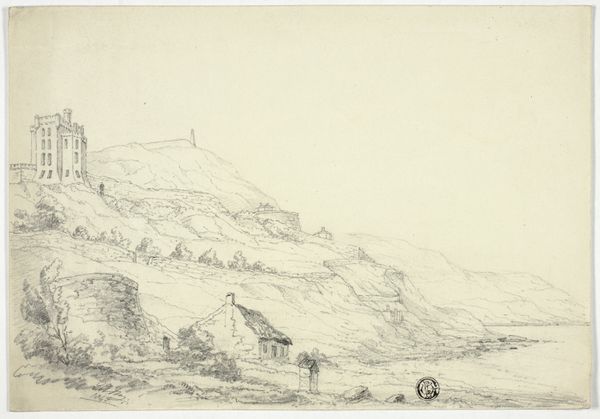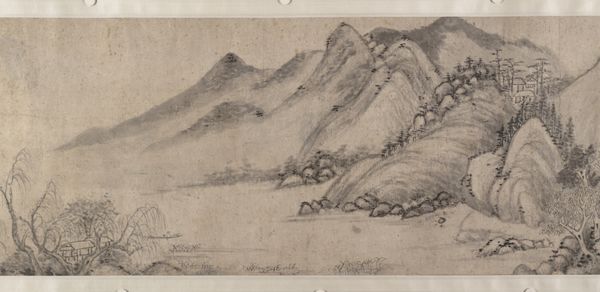
drawing, pencil
#
drawing
#
landscape
#
romanticism
#
pencil
Dimensions: overall: 7.4 x 12.7 cm (2 15/16 x 5 in.)
Copyright: National Gallery of Art: CC0 1.0
Curator: Before us, we have Edward Lear's "Mountainous View from Antrodoco," a pencil drawing he rendered in 1845. What strikes you immediately? Editor: There’s a stillness here. The monochromatic palette, the delicate lines… it evokes a quiet solitude, almost a melancholy. Curator: Indeed. Lear often sought such scenes, didn’t he? Places where nature felt untouched, offering a sort of sublime escape. In the 19th century, this search was so closely associated with the burgeoning concept of nationhood as figures such as Lear depicted idealized views to shape an idea of what nations look like and stand for. Editor: And it seems to have resonated widely. The mountains, almost stoic in their presence, appear as silent witnesses. I wonder about Lear's emotional state during this period; the scene reads like a projection of internal quietude onto a landscape. Is there any cultural memory associated with this location? Curator: Antrodoco was a strategically important town in the Papal States. Lear would have felt deeply connected to it during a particularly contentious time for the Italian peninsula. Think about this area as both a source of material inspiration and an almost stage setting where he could engage with social upheavals from what seemed a removed position. Editor: Right. I see the emotional appeal combined with a canny commentary, however subtle. Notice the careful shading on the peaks, contrasting with the almost rushed strokes delineating the foreground—suggesting an ambivalence, maybe. It would make sense that he wanted to record every feature that appeared remarkable while also considering what aspects must take center stage for his public. Curator: Absolutely. I wonder if that duality also informs the broader appeal. Its almost photographic accuracy draws the eye. It's simultaneously a document of a real place and a powerful piece of Romanticism in its depiction of that sublime, almost spiritual encounter with the natural world. Editor: Yes, both document and invitation. An invitation, perhaps, to find our own quietude within these monumental forms. Thanks to this interplay between observation and the psychological realm of associations, I feel encouraged to delve a little bit deeper into the relationship between external location and personal condition. Curator: Me too. Lear gives us both place and possibility.
Comments
No comments
Be the first to comment and join the conversation on the ultimate creative platform.
